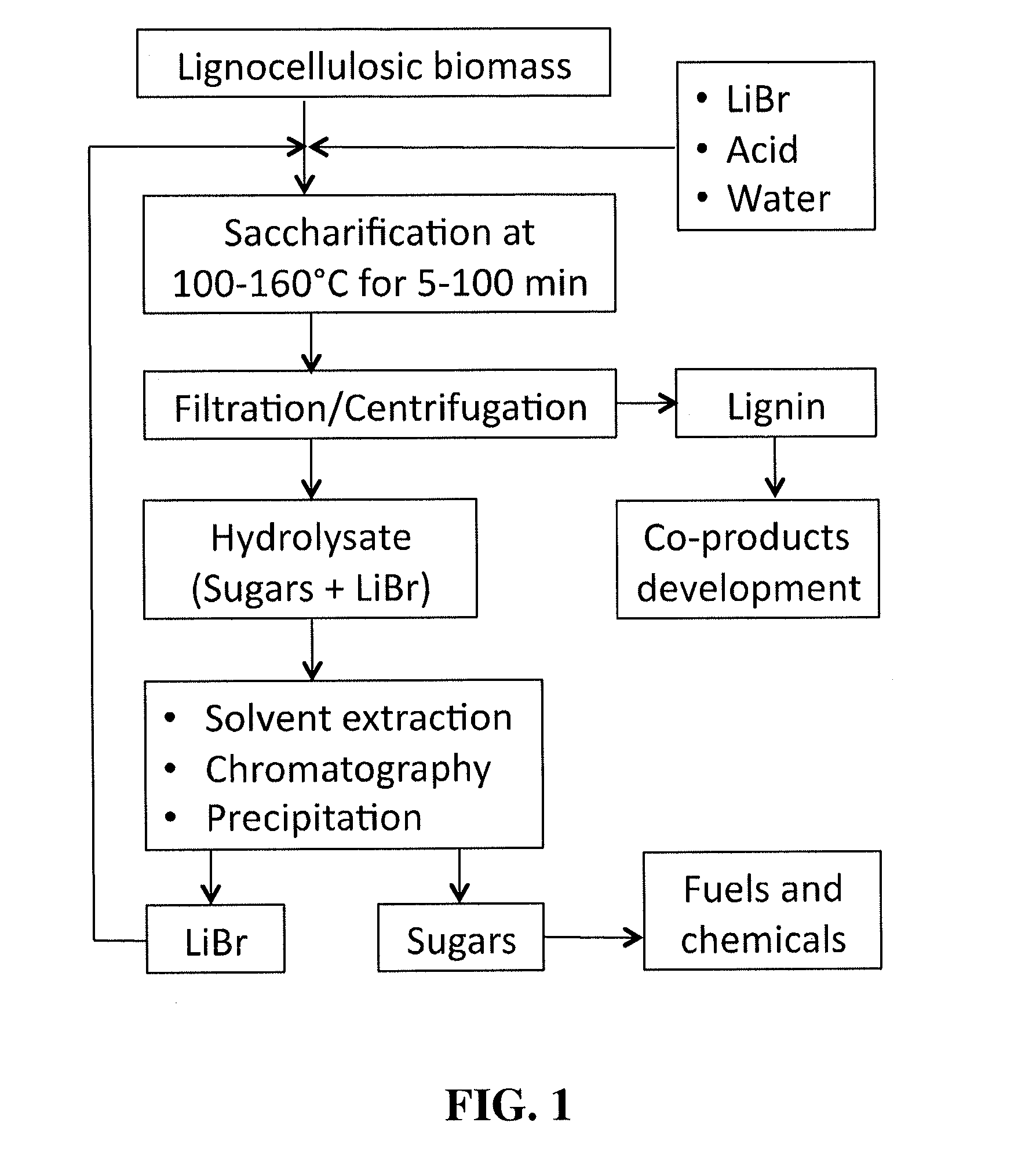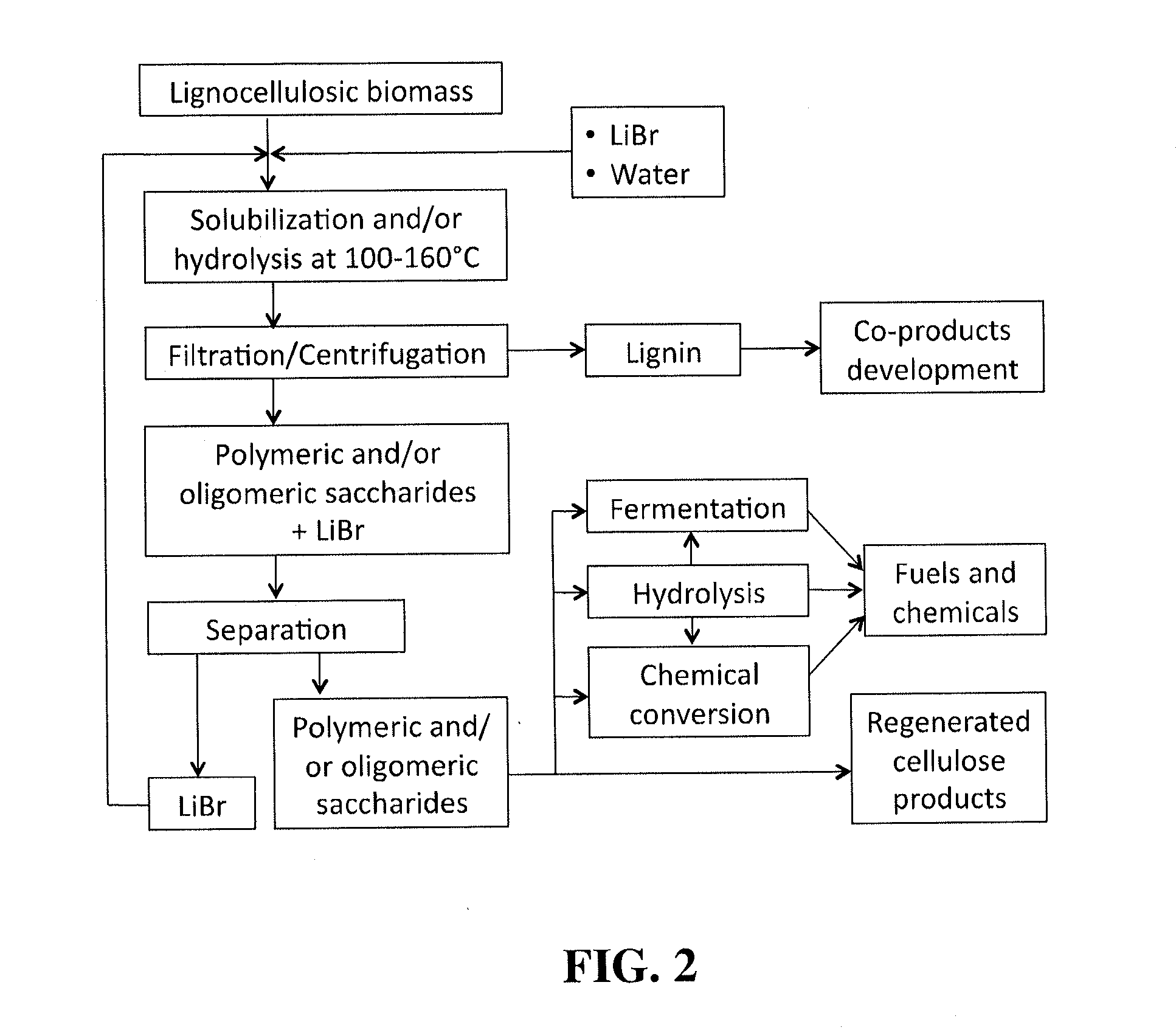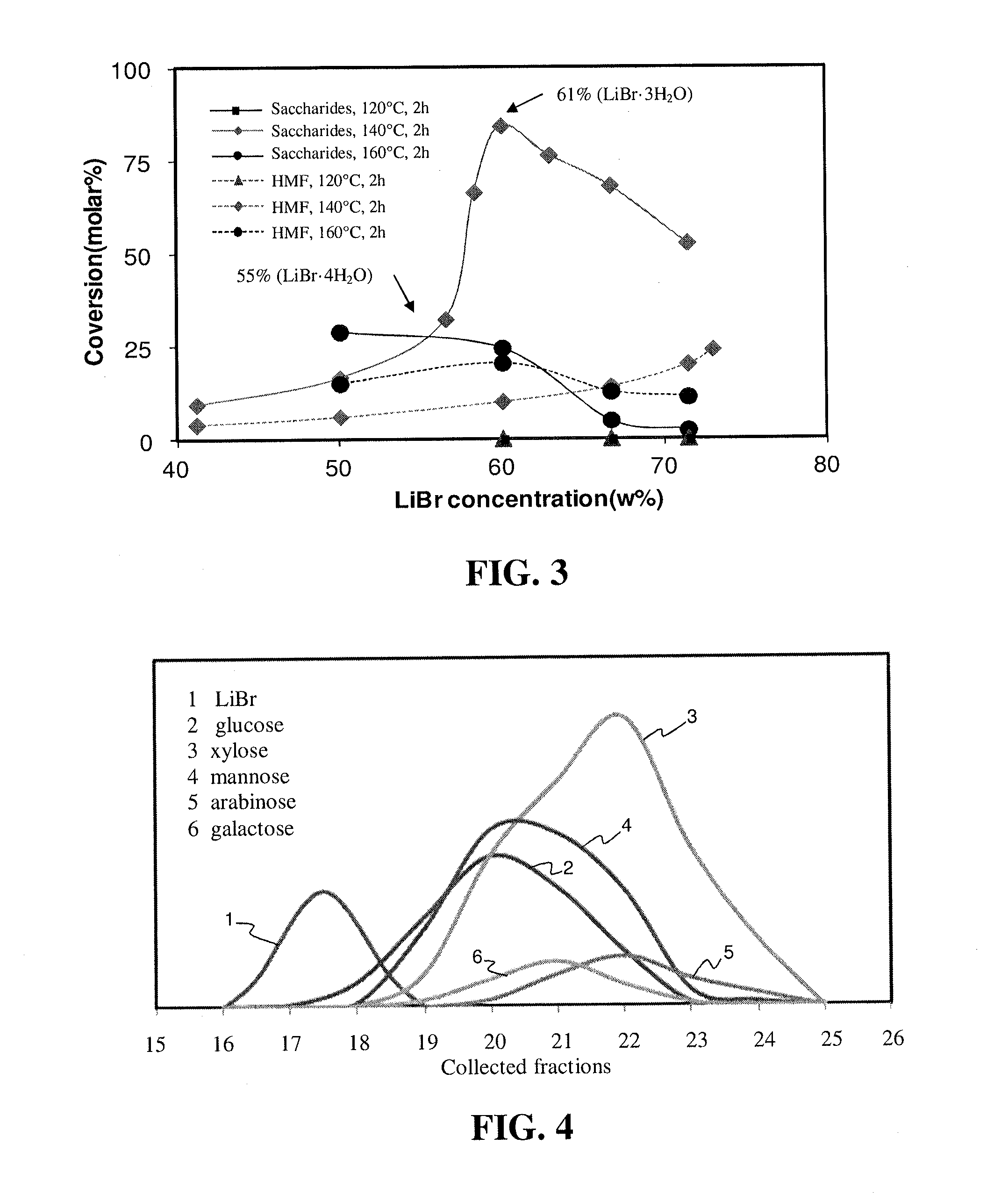Saccharification of lignocellulosic biomass
a technology of lignocellulosic biomass and lignocellulosic acid, which is applied in the direction of sucrose extraction by chemical means, glucose production, biofuels, etc., can solve the problems of limited sugar degradation and limited formation of fermentation inhibitors, and achieves reduced sugar degradation, improved cost and energy efficiency, and high purity
- Summary
- Abstract
- Description
- Claims
- Application Information
AI Technical Summary
Benefits of technology
Problems solved by technology
Method used
Image
Examples
example 1
Materials and Methods
[0070]Air-dried lignocellulosic materials, ground using a Wiley mill to pass a 40-mesh screen, were used in the present study. Chemical composition of different types of lignocellulosic biomass is presented in Table 1. All the chemical reagents and solvents used in this study were purchased from Fisher Scientific or sigma-Aldrich and used as received.
TABLE 1Composition analysis of different feedstockComposition, %SpruceCorn StoverPoplarSwitch grassNewspaperPrintpaperMoisture10.004.509.569.86NDNDExtractive5.0015.506.3216.58NDNDSaccharideArabinose0.982.710.291.930.350.19Galactose2.341.050.530.710.400.08Glucose42.0335.2843.4529.6663.2071.28Xylose5.1818.4013.4118.0112.1314.74Mannose10.1802.340.334.863.41Total lignin26.8816.7819.4215.5113.083.22Note:ND, not determined.
Quantification of Sugars
[0071]Sugar analysis was conducted using a Dionex High Performance Ion Chromatography (HPIC) system (ICS-3000) equipped with integrated amperometric detector and Carbopac™ PA1 gu...
example 2
Solubilization of Cellulose in Concentrated LiBr Solution
[0074]Dissolution in 61.7% LiBr solution (equivalent to LiBr.3H2O) of different cellulose samples, including microcrystalline cellulose (MC, Avicel® FMC Biopolymer), dissolving pulp (DP, bleached pre-hydrolyzed kraft pulp of hardwood), and cellulose filter paper (FP, Whatman, UK), was investigated. The results are summarized in Table 2. It is clear that 61.7% LiBr solution is able to swell and dissolve cellulose.
TABLE 2Dissolution of cellulose in aqueous LiBr solution (61.7%)CelluloseMolecular weightconcen-Temp.BeforeAftertration(° C.)TimeObservationdissolutiondissolution2% MC1001hSwelled and2.63 × 104dispersed4% MC1002hSwelled and2.63 × 104dispersed2% MC1205minDissolved2.63 × 1042.6 × 1044% MC1208minDissolved2.63 × 1042.61 × 1046% MC12015minDissolved2.63 × 1042.56 × 1042% MC1403minDissolved2.63 × 1042.52 × 1044% MC1405minDissolved2.63 × 1042.52 × 1046% MC1408minDissolved2.63 × 1042.50 × 1048% MC14010minDissolved2.63 × 1042.41...
example 3
Enhanced Acidity in LiBr Solution
[0078]Hammett acidity of 0.5% H2SO4 was determined in water and LiBr solution at varied LiBr concentrations.[18] The results are summarized in Table 3. At the same acid loading, the acidity was measured to be significantly higher in LiBr solution than in water (a more negative value means higher Hammett acidity). In addition, Hammett acidity increased with LiBr concentration. Enhanced acidity in bromine salt solution is believed to be one of the reasons why lignocellulosic biomass is saccharified faster in concentrated LiBr solution than in water or diluted LiBr solution.
TABLE 3Hammett acidity of 0.5% H2SO4 in water and LiBr solutionHammett acidity4-chloro-2-nitroaniline2-nitroanilinemethodmethod55% LiBr + 0.5% H2SO4−2.85−2.2249% LiBr + 0.5% H2SO4−2.18−1.8545% LiBr + 0.5% H2SO4−1.61−1.4041% LiBr + 0.5% H2SO4−1.23−1.05H2O + 0.5% H2SO40.040.51
PUM
| Property | Measurement | Unit |
|---|---|---|
| temperatures | aaaaa | aaaaa |
| temperatures | aaaaa | aaaaa |
| temperature | aaaaa | aaaaa |
Abstract
Description
Claims
Application Information
 Login to View More
Login to View More - R&D
- Intellectual Property
- Life Sciences
- Materials
- Tech Scout
- Unparalleled Data Quality
- Higher Quality Content
- 60% Fewer Hallucinations
Browse by: Latest US Patents, China's latest patents, Technical Efficacy Thesaurus, Application Domain, Technology Topic, Popular Technical Reports.
© 2025 PatSnap. All rights reserved.Legal|Privacy policy|Modern Slavery Act Transparency Statement|Sitemap|About US| Contact US: help@patsnap.com



